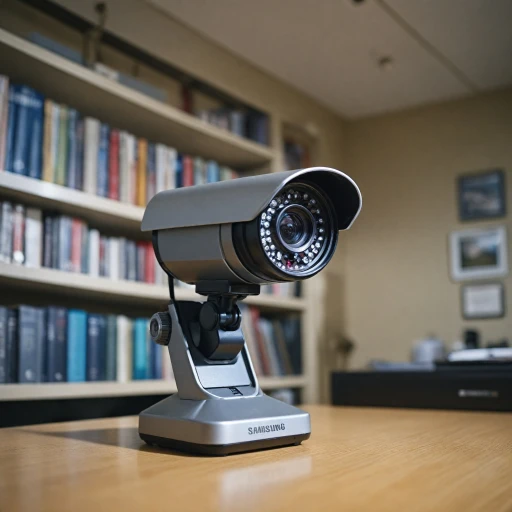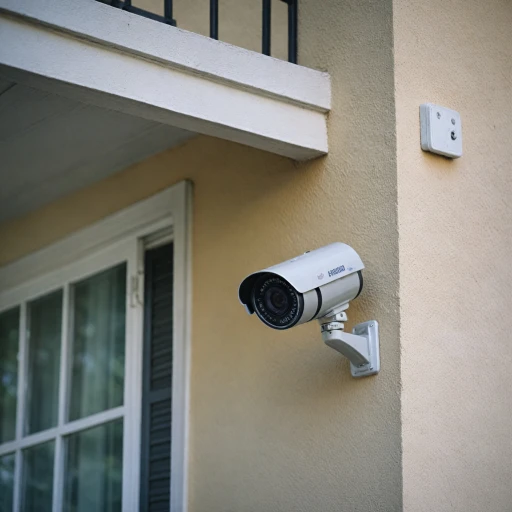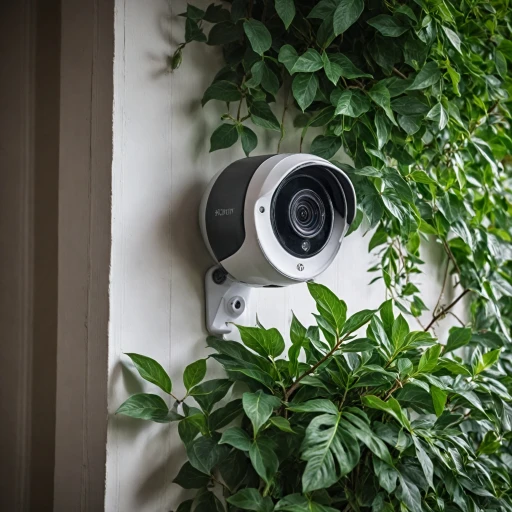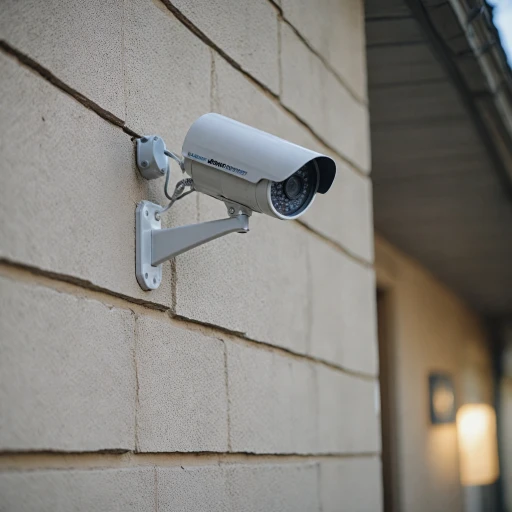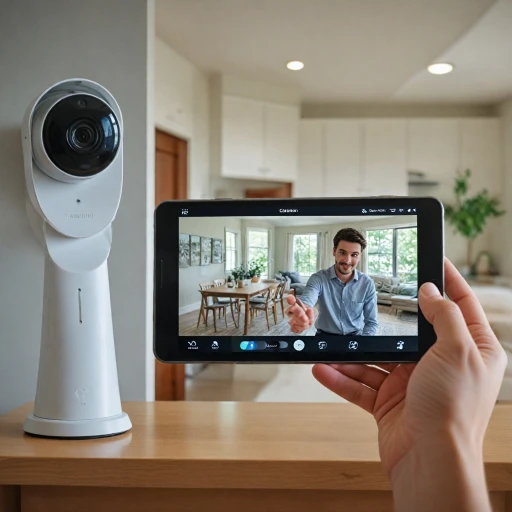
Understanding the Role of Surveillance Hard Drives
The Backbone of Your Surveillance System
When it comes to safeguarding your home, understanding the right surveillance hard drives is crucial. These specialized drives play a pivotal role in ensuring the reliability and effectiveness of your entire security system. Unlike regular drives, surveillance hard drives are engineered to handle the continuous video recording demands of modern security cameras.
One of the core features that distinguishes these hard drives is their ability to maintain smooth operation during constant data streams. While traditional hard drives are designed for intermittent use, surveillance drives offer superior performance by continuously managing large volumes of video footage. This endurance is vital for systems that operate 24/7.
Moreover, these hard drives contribute significantly to the security of the video surveillance. By storing important video data securely, they minimize the risk of data corruption that might stem from forced shutdowns or unexpected power losses.
For those looking to implement a surveillance system that offers robust storage and reliability, it's imperative to focus on purposely designed drives such as Western Digital’s Purple series. These are optimized for high definition and high-capacity systems, ensuring seamless video storage and retrieval.
Understanding the storage capacity and form factor of these drives is essential, as they must be compatible with your security system setup, be it a NAS or an NVR. Consider factors like internal versus external storage options, SATA hard connections, and your system's CLS and fill levels for optimal performance.
Explore how choosing the right storage option can bolster your overall security setup and gain insights into selecting the ideal capacity for your needs.
Key Features to Look for in a Surveillance Hard Drive
Essential Traits of an Optimal Surveillance Drive
Selecting the right surveillance hard drive is crucial for maintaining an effective security system. Here are some key features to consider when choosing a drive that's tailored for your surveillance needs:- Designed for Continuous Operation: Surveillance hard drives are engineered to operate 24/7, which is essential for security systems that require constant data recording. Unlike regular drives, these specialized hdd options are built to withstand the rigors of ongoing usage, ensuring reliability.
- High Capacity Storage: With increasingly high definition video footage captured by today’s surveillance cameras, having ample storage capacity is more important than ever. Drives need to be spacious enough to house large volumes of data without compromising performance. Options like Western Digital's Purple surveillance series offer extensive storage capacities.
- Optimized Recording Performance: Performance in a surveillance system directly correlates with its ability to efficiently write and read data. An hdd specifically designed for video recording can support multiple simultaneous video streams, ensuring data integrity is maintained across the system.
- Compatibility and System Integration: Ensure the selected drive is compatible with your current security system setup, whether it's an NVR, NAS, or another internal hard drive setup. Pay attention to the form factor, as well as the SATA hard drive specifications, to ensure a seamless fit.
- Data Security Features: Drives designed for security purposes often include enhanced data protection features. Look for models with built-in features that guard against data corruption and ensure accurate reading and writing.
- Durability and Longevity: Surveillance environments can be demanding, with potential exposure to various physical and electronic stresses. A robust drive, capable of functioning in diverse conditions, helps maintain system reliability.
Comparing Surveillance Hard Drives: A Quick Guide
Finding the Right Fit for Your Surveillance System
When selecting surveillance hard drives for your home security camera systems, it's vital to consider several key aspects to ensure optimal performance. The choice of drive impacts how well your system stores and retrieves video footage, ultimately affecting the overall security measure in place.
- Capacity: Start by evaluating the storage needs of your systems. High-definition video footage requires more space, and capacity will also depend on the number of cameras in your setup. Aim to balance between enough storage room and the budgetary constraints.
- Compatibility: Not all drives are designed to work with every security system. Be sure to pick drives compatible with your Network Video Recorder (NVR) or Network Attached Storage (NAS) systems that support the required interface, such as SATA hard connections.
- Performance: Look for hard drives engineered to sustain continuous recording and playback. Drives labeled as "Purple Surveillance" or similar are optimized for security camera usage, offering reliable performance in a 24/7 environment.
- Durability: Surveillance hard drives typically need to handle multiple streams of data. Consider the durability factor of the drive, especially if you expect it to operate under high-stress conditions within your security systems.
Once you've identified the right storage solution, integrating it becomes a matter of correctly configuring your surveillance system. Installation and maintenance tips outlined in this guide are crucial to prolong performance and secure your data.
If you're interested in understanding more about related aspects, considering the importance of mounting brackets for security cameras may also be beneficial for a holistic approach to your home security setup.
Installation and Maintenance Tips for Optimal Performance
Proper Installation for Seamless Operation
Installing a surveillance hard drive correctly is crucial for ensuring the optimal performance of your security system. Begin by selecting a drive designed specifically for video surveillance, such as the Western Digital Purple series, which is engineered to handle high-definition video recording and playback.
- Form Factor and Compatibility: Ensure the hard drive's form factor matches your system's requirements. Most surveillance systems use a 3.5-inch SATA hard drive, but always verify compatibility with your NVR or NAS system.
- Secure Connections: Use quality cables to connect your hard drive to the system. Secure connections are essential to prevent data loss and maintain the integrity of video footage.
- Firmware Updates: Regularly check for firmware updates from the manufacturer to enhance drive security and performance.
Maintenance for Longevity
Regular maintenance of your surveillance hard drive can extend its lifespan and ensure consistent performance. Here are some tips to keep your system running smoothly:
- Temperature Control: Ensure your system is in a cool, well-ventilated area. Overheating can degrade the performance of your internal hard drive and reduce its lifespan.
- Data Management: Periodically review and manage your stored data. Deleting unnecessary video footage can free up storage capacity and improve system efficiency.
- Check for Errors: Use diagnostic tools to regularly check for errors or bad sectors on the hard drive. Addressing these issues early can prevent data loss.
By focusing on proper installation and regular maintenance, you can ensure your surveillance system operates at peak performance, providing reliable security for your home.
Common Challenges and Solutions in Surveillance Storage
Overcoming Common Storage Hiccups
Navigating issues with surveillance storage can often seem daunting, but with a bit of know-how, many common challenges can be addressed efficiently. Here is a quick rundown of typical problems and potential solutions to keep your video surveillance system running smoothly.- Data Overload: Surveillance systems continuously record video footage, which can quickly lead to full storage capacity. Opt for hard drives specifically designed for surveillance, such as the western digital purple surveillance drives, which are built to handle the high-definition recording demands and capacity needs of an internal HDD.
- Drive Failures: Surveillance hard drives operate 24/7, making them susceptible to wear and tear. Employ a Network Video Recorder (NVR) or Network Attached Storage (NAS) system to ensure your high-definition video is backed up. Regular maintenance is crucial to mitigate hard drive failure risks.
- Compatibility Issues: Ensuring your SATA hard drive is compatible with the specific form factor of your security camera system is essential. Drives designed for CLS fill and internal configurations typically integrate better with video surveillance systems.
- Performance Degradation: Over time, a hard drive’s performance can degrade. Periodically check for firmware updates and regularly defragment your drive to maintain optimal operation and storage efficiency in your recording systems.
- Data Security: Keeping video footage secure is vital. Implementing strong security protocols and encryption methods can protect stored data from breaches. Drive security systems like encryption can safeguard against unauthorized access to your video surveillance records.
Future Trends in Surveillance Storage Technology
Emerging Technologies Shaping Surveillance Storage
The landscape of surveillance storage is rapidly evolving, driven by technological advancements that promise to enhance the efficiency and reliability of security systems. As we look to the future, several key trends are emerging that will likely redefine how we think about video surveillance and data storage.
AI and Machine Learning Integration
Artificial Intelligence (AI) and machine learning are becoming integral to modern surveillance systems. These technologies allow for intelligent data analysis, enabling systems to identify unusual patterns or behaviors in video footage. By integrating AI into storage solutions, security systems can optimize the use of storage capacity, ensuring that only relevant data is retained. This not only improves the efficiency of data management but also enhances the overall performance of the security system.
Cloud-Based Storage Solutions
Cloud storage is gaining traction as a viable option for surveillance systems. It offers scalability, allowing users to easily add capacity as needed without the constraints of physical storage limitations. Moreover, cloud solutions provide remote access to video surveillance data, enabling security personnel to monitor systems from anywhere. This flexibility is particularly beneficial for large-scale operations or multi-site businesses.
Enhanced Data Security Measures
With the increasing reliance on digital storage, ensuring data security has become paramount. Future surveillance storage solutions are expected to incorporate advanced encryption techniques to protect sensitive video footage. Additionally, systems will likely feature robust authentication protocols to prevent unauthorized access, safeguarding both the data and the integrity of the security system.
Adoption of High-Definition and 4K Video
The shift towards high-definition (HD) and 4K video surveillance is placing new demands on storage solutions. These formats require significantly more storage capacity, driving the need for high-performance drives designed to handle large volumes of data efficiently. Surveillance hard drives, such as those offered by Western Digital, are being developed with enhanced durability and capacity to meet these demands.
Integration with NAS and NVR Systems
Network Attached Storage (NAS) and Network Video Recorder (NVR) systems are becoming increasingly popular for managing surveillance data. These systems offer centralized storage solutions that can be easily integrated with existing security infrastructure. By utilizing NAS and NVR, users can streamline data management and improve the overall performance of their surveillance systems.
As technology continues to advance, staying informed about these trends will be crucial for anyone looking to optimize their surveillance storage solutions. By understanding the role of surveillance hard drives and keeping an eye on future developments, you can ensure that your security system remains effective and up-to-date.





